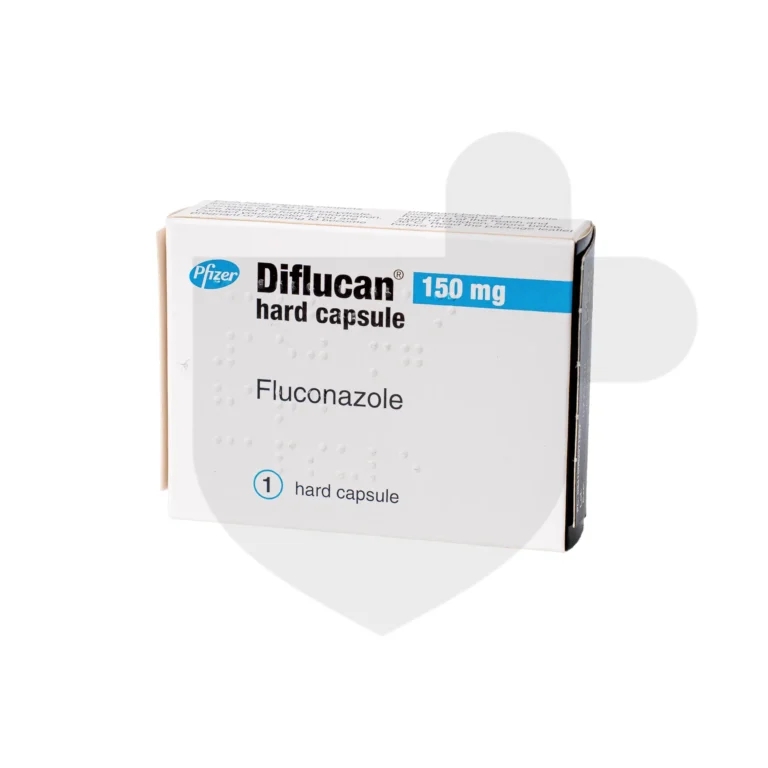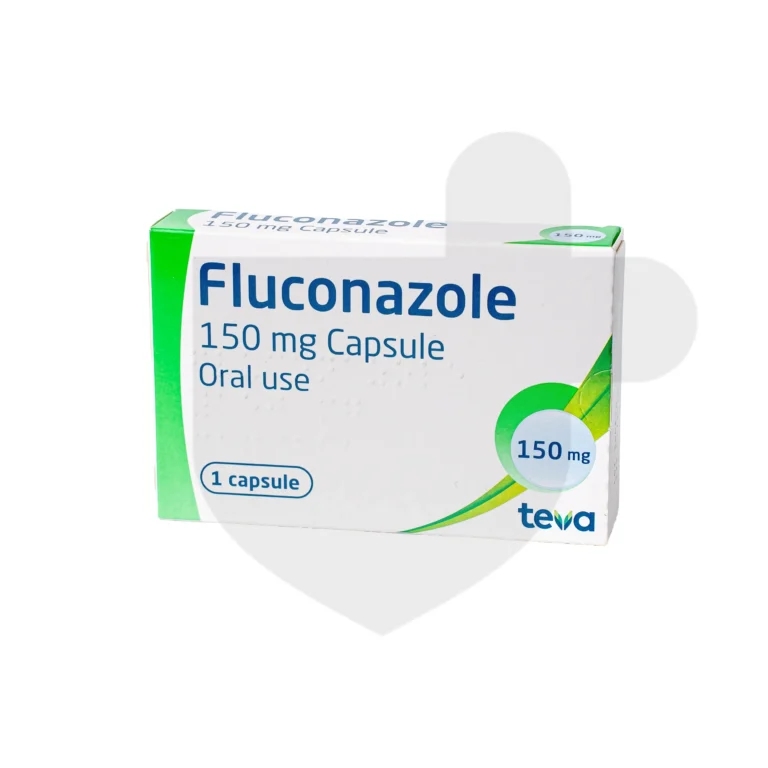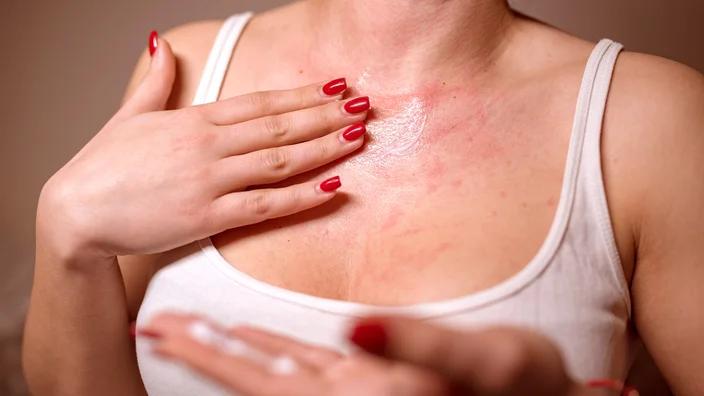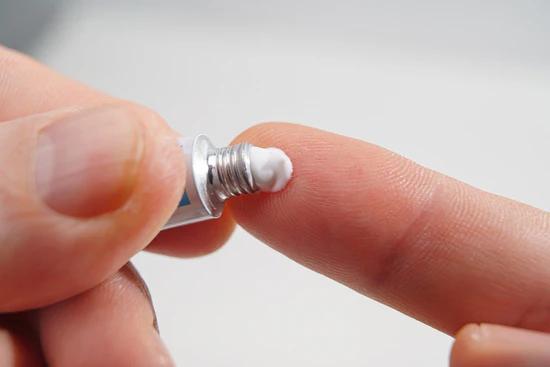Get Treated for Thrush
GET TREATED CONVENIENTLY
Available Treatments for Thrush
SAFE PRESCRIBING
Get Started With the Right Treatment for You
MEDICAL INFORMATION
Thrush Key Facts
Thrush (oral candidiasis), is a fungal infection affecting the mouth and throat. It is most common in infants, older adults, and people with weakened immune systems. Here, we will take a look at the causes, symptoms, and treatment options available for Thrush.
What causes Thrush?
Thrush is caused by the overgrowth of Candida albicans, a type of yeast that lives naturally in the mouth and gastrointestinal tract. Normally, good bacteria in the body and the immune system keep the Candida in check, but certain factors such as a weakened immune system, hormonal changes, or certain medications, can affect this balance, allowing fungus to multiply and cause symptoms.
Thrush can present as pseudomembranous (white patches on the mouth, tongue, or throat) and atrophic form (red patches underneath upper dentures in older adults). Thrush infections are not sexually transmitted infections (STIs) and is not contagious in most cases. Thrush can be caused by:
- Antibiotics, which may kill good bacteria that normally prevent Candida overgrowth
- Inhaled corticosteroids for asthma
- Ill-fitting dentures that cause friction and irritation in the mouth
- A weakened immune system due to HIV/AIDS, diabetes, or cancer
- Chemotherapy or radiation therapy
- Dry mouth
- Smoking, which weakens the immune system and damages the lining in the mouth
Risk factors for Thrush
Risk factors include:
- Those under the age of 6 months are more at risk, as their immune systems are not fully developed
- The elderly, who may have a weakened immune system or age-related changes in their oral health
- Conditions such as HIV/AIDS, cancer, or diabetes which may weaken the immune system
- High blood sugar levels, which can create an environment conducive to Candida growth
- Pregnancy, hormonal contraceptives, or hormonal imbalances
Signs and symptoms of Thrush
Common symptoms of Thrush include:
- White patches that look like cottage cheese, on the tongue, gums, inner cheeks, or throat. These patches cannot be wiped away easily
- Soreness and redness in the mouth and throat
- Cracking or fissures at the corners of the mouth
- Loss of taste or an unpleasant taste
- Difficulty eating or swallowing
- Pain in the affected areas
Symptoms of vaginal Thrush include:
- Vaginal and vulval discomfort
- Thick white vaginal discharge
- Swelling or redness of the vulva or vagina
- Redness, swelling or cracks in the genital skin
- Stinging or burning when urinating or during sex
Some individuals with Thrush may not have any symptoms, while others may have more severe symptoms. Speak to a healthcare professional if you think you have Thrush. Untreated infections can lead to complications.
Diagnosis of Thrush
A healthcare professional will take your medical history and examine your mouth and throat for signs of Thrush. A swab may be taken of the lesion to confirm the presence of Candida. The sample is usually sent to a lab for analysis. In certain cases, additional blood tests may be needed to check for complications or other medical conditions associated with Thrush.
Treatment options for Thrush
Thrush treatment aims to eliminate the fungal infection to relieve symptoms. Treatment will depend on the severity of your infection and any underlying risk factors causing Thrush. Home remedies and self-measures may be sufficient for the treatment of mild cases of Thrush. These include:
- Salt water mouth rinses to help reduce inflammation and promote healing
- Baking soda mouth rinses
- Probiotic yoghurt to help restore the natural balance of bacteria in the mouth
- Lemon juice acts as an antiseptic and may help fight against the fungus
- Turmeric contains curcumin, an anti-inflammatory and antifungal. Turmeric mouth rinse may help reduce inflammation and stop the growth of fungus in the mouth
- Clove oil has antiseptic and pain-relieving properties
In more severe cases of Thrush, over-the-counter or prescribed antifungals may be used. These are available as topical antifungal creams or sprays, oral lozenges, vaginal pessaries, tablets, oral solutions, or systemic medications that work throughout the body.
Common antifungals include clotrimazole such as Canestan , nystatin, fluconazole such as Diflucan, and miconazole. Duration of treatment will depend on the condition being treated and your response to treatment. Nursing mothers with Thrush may be prescribed antifungal medicines for both themselves and the baby.
Prevention of Thrush
Preventive measures can reduce the risk of developing Thrush. These include:
- Maintaining good oral hygiene
- Avoiding irritants such as, perfumes, bubble baths, or products that irritate the skin and disrupt the natural balance of bacteria
- Keeping the genital area dry and wearing breathable underwear
- Managing conditions such as diabetes or immune deficiencies
- Avoiding unnecessary or prolonged use of antibiotics
- Stopping smoking
- Staying hydrated and using saliva substitutes if necessary for a dry mouth
Thrush in babies and children
Thrush is common in infants and can be passed from mother to baby during childbirth or when breastfeeding. Symptoms may include white patches in the mouth or on the tongue, irritability, and difficulty feeding. Treatment includes oral gels or drops, good hygiene, and sterilising pacifiers and bottle nipples, to prevent reinfection.
Thrush in older adults
Symptoms in older adults include white patches on the tongue or inner cheeks, pain or discomfort when eating, and dry mouth. Treatment includes antifungals. Older adults also need to maintain good oral hygiene and manage any underlying health conditions that may contribute to the development of Thrush.
Complications of Thrush
If left untreated or if the immune system is severely compromised, Thrush can spread to other parts of the body, leading to complications, such as invasive candidiasis, which may affect vital organs.
Recurrent Thrush
Recurrent Thrush is defined as four or more episodes within a year and may require investigation to identify any underlying causes. This may include testing for diabetes or assessing your immune system.
Conclusion
Thrush is a common fungal infection caused by the overgrowth of Candida albicans. With early diagnosis and the right treatment, Thrush can be effectively managed. Speak to your healthcare provider if you think you have Thrush, for an accurate diagnosis and appropriate treatment. Maintain good oral hygiene, manage any underlying health conditions you may have, and take preventive measures to reduce the risk of recurrent Thrush.
Sources
- NHS Thrush
- Clevelandclinic – Thrush
- Mayoclinic – Thrush
- CDC – Thrush
- NHS Inform – Thrush
- Cedars-Sinai – Thrush
Medical Disclaimer
NowPatient has taken all reasonable steps to ensure that all material is factually accurate, complete, and current. However, the knowledge and experience of a qualified healthcare professional should always be sought after instead of using the information on this page. Before taking any drug, you should always speak to your doctor or another qualified healthcare provider.
The information provided here about medications is subject to change and is not meant to include all uses, precautions, warnings, directions, drug interactions, allergic reactions, or negative effects. The absence of warnings or other information for a particular medication does not imply that the medication or medication combination is appropriate for all patients or for all possible purposes.
Related Articles
Service Guide
Everything You Need to Know About Getting Treated Privately for Thrush
What does the Get Treated Privately service for Thrush do?
The Get Treated Privately service is a private prescribing service which is designed for adults aged 18 years and over, who are experiencing health issues and who would like to receive a fast-track assessment and if applicable, a treatment plan from a qualified prescribing clinician. Treatments for Thrush are dispensed and delivered to your home or workplace from our regulated online pharmacy.
Is this a safe Thrush prescribing service?
Yes. Our formulary of medications prescribed for Thrush are controlled, governed, and continuously risk-assessed by our Medical Director, Dr Ihtesham Sabri. Unlike other prescribing services which operate using faceless questionnaires, our Thrush prescribing service is conducted through remote video consultations, also known as synchronous consultations. This builds patient safety and prescribing appropriateness into our service, ensuring our prescribing clinicians can be satisfied with who and what they are treating. There is no guarantee of supply of medications, and any prescriptions supplied are at the sole discretion of our clinician prescriber. There is no charge for the Thrush consultation.
What is a prescribing clinician and is it safe for me to use them on the NowPatient platform?
Our prescribing clinicians are board-certified pharmacists, nurses, or doctors who can also prescribe any medicine for any medical condition, subject to accepted accreditation and good clinical practice. They are all registered with their respective regulatory bodies. For example, a pharmacist independent prescriber is registered with the General Pharmaceutical Council (GPhC). Each prescribing clinician undergoes an extensive background check including a disclosure and barring service check (DBS). In addition, they undergo a rigorous license verification process. When you book an appointment with our prescribing clinicians you will see their full name, license number, and any specialized credentials they have.
Is the service available worldwide?
Yes, you can get treated privately for Thrush worldwide.
Do I need to pay for this service?
Yes. This is a private service. You do not need to pay for the consultation. You only pay for the cost of the Thrush treatment that you are prescribed.
How do I book a consultation?
Once you have logged into your account, you will need to navigate to the Get Treated Privately service card which is located as a service item on the dashboard.
Using the action button on the service card, you can select one of the following – ‘Search Treatments’ or ‘Search Conditions’. From here you can search for Thrush.
Depending on the search type and the product/condition that you would like to get treated, you will be taken to a consultation booking screen. Follow the simple steps to complete your booking. During the booking confirmation, you will be able to select a date and time that is convenient for you, along with the preferred language and gender of the prescribing clinician you wish to choose. You will then see a list of all available expert clinicians who are trained to assess the medication or condition chosen. Once you have confirmed your booking, you will see a summary of the appointment including preliminary information about the consultation. At this point, you will also be able to add a reminder to your calendar. Always ensure your account health profile is up to date before any consultation. This ensures that our clinicians have the most up-to-date information about your current health status and anything that may influence their prescribing decisions. You will receive a push notification, SMS notification and email reminding you of your consultation, 30 minutes before the virtual consultation is due to start.
Depending on certain medications which require our clinicians to have your up-to-date blood pressure readings, you may be required to submit a virtual blood pressure check, using your smartphone or device. We will provide you with full instructions, when this is required.
What happens during the remote video consultation?
During the consultation, the clinician will ask you a series of questions that will allow the clinician to assess your condition and potential treatment options for Thrush. At the end of the consultation, the clinician will decide which treatment options are safe and suitable option for you.
If it is, the clinician will discuss the treatment option, so that you can jointly agree on the treatment plan. Once you have jointly agreed on a treatment plan, the clinician will issue a prescription treatment for your Thrush which will be available in your Cart at the end of the consultation.
Also, with your consent, the clinician may wish to inform your doctor of the treatment that was prescribed. We recommend that you agree to this since your doctor is responsible for your overall care and they should have a record of this consultation and medication prescribed. In addition, our clinician may take the opportunity to advise you on your overall health including advice on healthy living or stop smoking.
What happens at the end of the Thrush consultation?
At the end of the consultation, you will receive a notification which will summarise the outcome. It will also advise you if any referrals were made to your doctor, along with any other advice that was given to you by the clinician.
If a referral letter was issued to your doctor, you will be able to view a copy of this in the ‘Documents’ section of the dashboard.
If you were prescribed a treatment, it will now be available in your Cart.
When you go to your Cart, you will be able to select the treatment, checkout and make payment. Once the checkout is complete, your prescription order will be sent to our regulated online pharmacy for processing.
What if the prescriber does not prescribe a treatment for Thrush?
We operate a safe prescribing service. This means that our prescribing clinicians always exercise their clinical judgment when prescribing . Unfortunately, we do not operate a self select service where you can choose a medication and simply buy. If the clinician that sees you does not prescribe anything, then you will not be charged.
Will I get status updates for my order?
Yes. When your Thrush treatment is approved, and after you have checked out and paid for your order, we will keep you fully updated with the status of your order. Every time the status of your order changes, you will be notified immediately. These notifications will appear in the ‘Notification Feed’ section on the dashboard.
How will my Thrush treatment be delivered?
All orders are shipped in discreet and unmarked packaging. This means it is suitable for delivery wherever you require (home, work, or a neighbour).
For thermo-sensitive orders (e.g. Insulin or weight loss injections) we use cold chain-validated packaging. Your parcel will normally receive an estimated delivery window from the courier on the day of delivery.
For your protection and safety, your first order can only be delivered to the address that is registered with NowPatient. Future orders can be delivered to any other address, for example, your workplace.
Do you ship cold-chain or temperature sensitive products?
Yes. We use a specialist courier service for all thermo-sensitive deliveries. This is to ensure that cold chain integrity is always maintained and thus the product quality, safety and efficacy.
Learn more about how we handle the delivery of temperature sensitive products.
Where do you deliver?
We currently deliver to all postcodes/zipcodes worldwide. Some postcodes in rural areas may have a slightly longer delivery time.
When will my order arrive?
We aim to ship all orders placed Monday – Friday before 3pm on the same day. Orders placed outside these times will be shipped the next working day. All deliveries are shipped by Royal Mail, which delivers Monday through Saturday in the UK. For deliveries outside of the UK, please check with your national postal service for accurate delivery days.
Our delivery options have the following delivery times:
- UK – Royal Mail Tracked 24 & Signed for Delivery – Next day delivery
- Europe – Royal Mail Tracked – Typical delivery of 3-5 working days
- Worldwide – Royal Mail – Typical delivery of 5-7 working days. If a tracked option is available for your country via Royal Mail, this service will be applied.
What should I do if my order has not arrived?
Delivery is normally made promptly after your dispatch notification is received. You can check the tracking details of your Thrush order in the ‘Notification Feed’ section of the dashboard, at any point after dispatch.
Unfortunately, packages can sometimes get lost in the delivery system. If after 10 days you have not received your delivery, please contact us and we will do all we can to resolve the problem.
Can you prescribe GLP-1 weight loss injections?
Yes. However, with GLP-1 weight loss medications, the license requires that there are support resources put in place as part of the plan including coaching for a healthy lifestyle, exercise, and diet. Our clinicians will discuss this with you, if you are prescribed this type of treatment.
You can learn more on our Weight Loss Programs feature page.
What’s included with my order?
If you are ordering a treatment for Thrush, your order will contain your medication only.
If you are ordering weight loss injections, your order will contain:
- Your prescription of pre-filled weight loss injection pens
- Needles
- Sharps bin for safe disposal of needles (if ordered as part of the bundle)
Can I reorder my medication, if I have already been prescribed a course?
Yes. However, as a responsible prescribing service, we do not issue more than one monthly cycle of medication at a time.
This means that, if you would like to reorder, you will need to rebook a consultation.
This is important, because it allows our clinicians to keep track on the progress of your treatment plan and ensure that the medication remains safe and effective for you.
What is the earliest I can reorder my medication or treatment?
14 days after you have received your first monthly supply of medication, we will send you a notification to advise you that you are eligible to reorder your medication. To ensure that we are able to safely prescribe the Thrush medication for the next supply, you will need to rebook a consultation.
This ensures that our clinician can check in on your treatment plan and ensure it is working as intended and continues to be safe, suitable and appropriate for you.
How do I reorder my Thrush treatment?
When you are eligible to reorder your next Thrush prescription, we will send you a notification reminder. This notification reminder will request that you book a consultation with a NowPatient Clinician.
You should book a suitable time and date for the consultation.
At the end of the consultation, the clinician may advise you to either
- Stop the treatment
- Stay on the current dose
- Increase the dose
If our clinician deems it safe for you to continue the medication used to treat Thrush, the prescription will be added to your cart, from where you can checkout.
Delivery will be made in line with our delivery timescales.
As a responsible prescribing service, we will always monitor your Thrush treatment plan to ensure that it remains safe, effective and suitable for you.
How do I reorder weight loss medication?
Our weight loss programs are built to closely monitor treatment progress and safety. Please refer to the Weight Loss Programs Service Guide that explains how you can reorder or step edit your dose.

















